Aleste
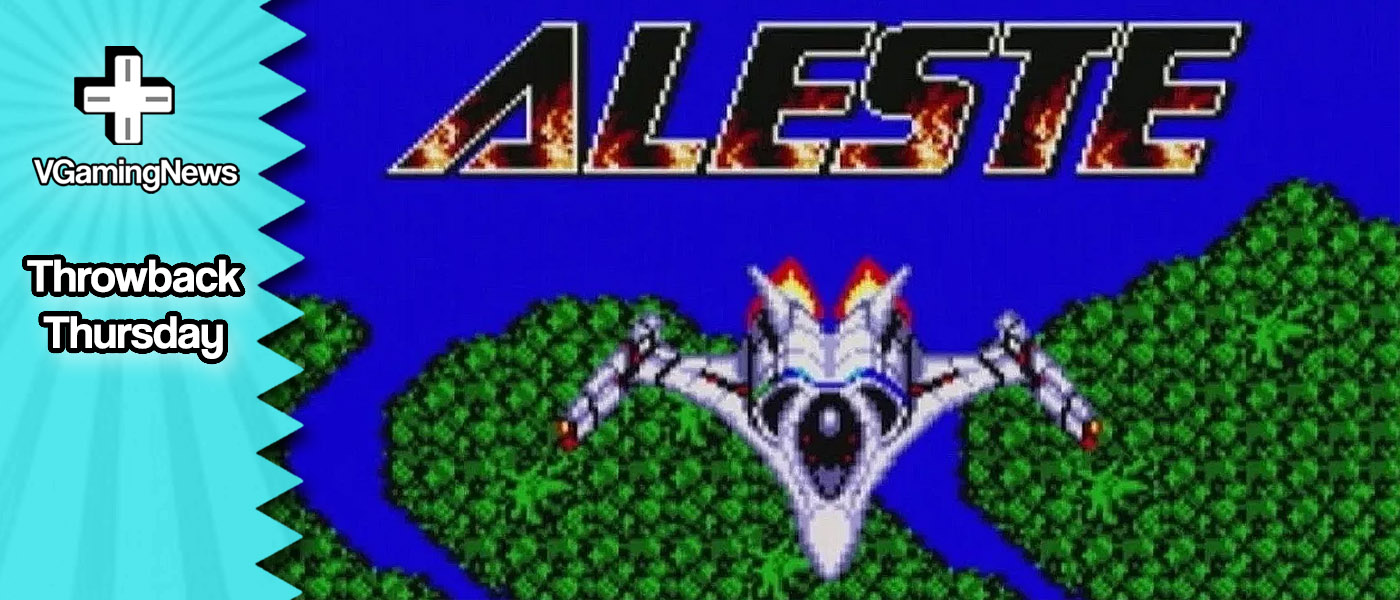
I’ve always said that some of my earliest gaming memories typically revolve around a blue hedgehog running from left to right, chasing down an evil rotund doctor. The recollections are so ingrained in my brain that I look back on them fondly with a rose-tinted view, and accept them as absolute truth. That is until a rogue memory triggers from a benign task, say unboxing a Sega Master System II for the first time in eight years, and realising those gilded feelings aren’t the full story. You see, before a wide-eyed Joe clapped his peepers on Sonic the Hedgehog for the Sega Mega Drive, he watched his older sister pour hours upon hours of free time into a curious wonder known as the Master System. After re-remembering Sega’s pre-MD home console, my gamerbrain™ kicked into gear and I started thinking about what the 8-Bit era had to offer. During my research of fledgling platformers and RPGs, dungeon crawlers and racers, I came across a top-down shoot-‘em-up called Aleste, or Power Strike for us Westerners; a game that somewhat ironically released on a day most of us forgets – 29 February.
At A Glance
| Aleste | |
| Positives | + Beautiful graphics that still stand up today + Simple controls + Solid difficulty |
| Negatives | – Dodgy AI – Framerate issues – Unforgiving hitboxes |
| Overall | 5/10 |
| Played On | Master System |
| Also Available On | MSX, Wii, Switch |
| Find out about our scoring policy here. | |
Normally the second paragraph in our reviews is reserved for a description of the game and details of the main hook to engage players. When I booted up the nearly nine-year-old game I was met with Aleste’s simple title screen where the only choice I had was to press Start and get going. There was no lengthy tutorial, no overbearing voice that told me who the bad guys were – hell, there wasn’t even a Star Wars-type crawl laying out why I was playing the game. Aleste began throwing enemies at me and I happily dealt with them by shooting them down from my superpowered jet fighter. That’s when I remembered, games from the 1980s worked a little differently.
In 2024, Call of Duty will slap you in the face as it happily gobbles up 100 gigs of storage, but games in the 8-bit era were severely limited in size, topping out at a couple of hundred kilobytes. This meant the developers had to optimise every game to within an inch of its life. The unimportant details like plot, dialogue, and how to use the controls were left on the cutting room floor. It wasn’t until I was flying over a river that cut through the forest I remembered this fact and paused my current run. You see, if you were cultured in the 1980s-90s then you had to read a book before you played any new game. Flicking through Aleste’s manual unlocked all of the information I needed to know (thanks internet archive for the PDF version!), I was a talented pilot who had been tasked with clearing out an extra terrestrial force that had invaded the planet. Through six long levels, I had to gun down anything and everything in my path before taking on a big boss. Reading on, the manual gives you a detailed rundown of all the available powerups and the environments you’ll be tackling, and there’s even an enjoyable section about how many points each enemy is worth.
I know what you’re thinking, “That’s enough about the reading, old timer, tell us about the shooty-shooty already,” and you’re right. Aleste is very much a top-down shooter that has two simple objectives, blast everything that moves and get that high score. Once I was done with the manual, I unpaused my game and carried on mowing through enemies with reckless abandon. Aleste makes this as easy as can be: the D-pad is your movement, with both action buttons firing bullets at the oncoming masses. Standard bullets cut through most types of enemies with little-to-no problems and the special ammo, collected by picking up floating numbers on screen, is designed to be a little more impactful. The types of specials I collected varied from homing missiles to big globs of energy designed to take on multiple enemies. The specials do have limited ammo, but as I flew across the levels, each one certainly helped even the odds for me. The best item by far is the Number Eight, an energy wave that weaves across the screen taking out ships and bullets, allowing me to get some breathing room.
Having a break in combat in Aleste allowed me to gather my thoughts and pay attention to the scenery. Each of the levels is designed around certain themes; the aforementioned forest is first up, before the action progresses to the desert, and eventually ending up in another world. Aleste still holds up today; it is amazing how detailed each area is and how well everything pops from the screen, even when you consider there’s a limited colour palette to work with. The enemy ships are a little on the blurry side, but they are still pronounced enough that I never lost sight of them at any point.
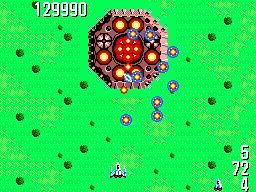
While I could talk for hours about how great an 8-bit shooter from the 1980s is, there are a few problems. The first thing to note is the slowdown. Each round only lasted around 5 minutes but during that time I was constantly bombarded with action. Dodging bullets and ships was mostly fine, but in the heavier sequences the action almost ground to a halt – the game never broke, and aside from the framerate nose-diving, it was never too much of a problem. I chalk the performance issues down to the game being played through the electronic equivalent of a root vegetable and since this was a prolific issue with the Master System in general, it is best just to accept this as a sign of the times and move on. It is worth noting that there is a modern Switch port of the entire Aleste series and while I couldn’t get my hands on a copy, I would assume that with a more up-to-date console that (at the time of writing) is two years younger than the game, these issues would have been ironed out, right… Right?
The AI of the enemies is also a problem, with ships seemingly jerking away from their intended path, for sheer kicks. Perhaps the developers cut a bit too much code, but throughout various runs and playthroughs, it was the ships that caused me the most amount of anguish, rather than the bullets that were supposed to hit me. This would have been manageable if it wasn’t for the brutal respawn procedure. When a ship came back to life, it appeared just where you got blown up, but with next to no invincibility grace period. This meant if a ship hadn’t moved on in the two seconds from taking you out, you could lose multiple lives in quick succession. As Aleste is first and foremost an arcade game, I think it was purposefully designed this way so the developers could rake in more 50p coins, but on a console that has no save states, it is a frustrating hangover that could have easily been tinkered with.
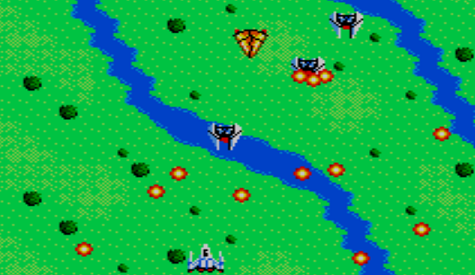
Aleste is an entertaining arcade game from start to finish, and despite being a nine-going-on-thirty-six-year-old title, the sh’mup still has a lot to offer players. The graphics, while squeezed into a small 4:3 square, still hold up after all of these years but the combat is gloriously well-balanced. Sure there are issues with that dastardly hitbox killing you if you respawned a pixel too close to another ship, and the busier levels can suffer slowdown to the point of unplayability, but there is a charm to the experience that still makes Aleste a fun game to play despite the issues presented to it.
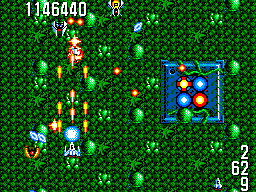


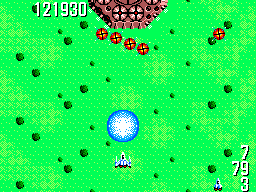
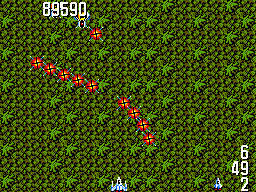
Thanks for taking the time to read our review. If you’d like to support us further, please consider buying us a coffee!







